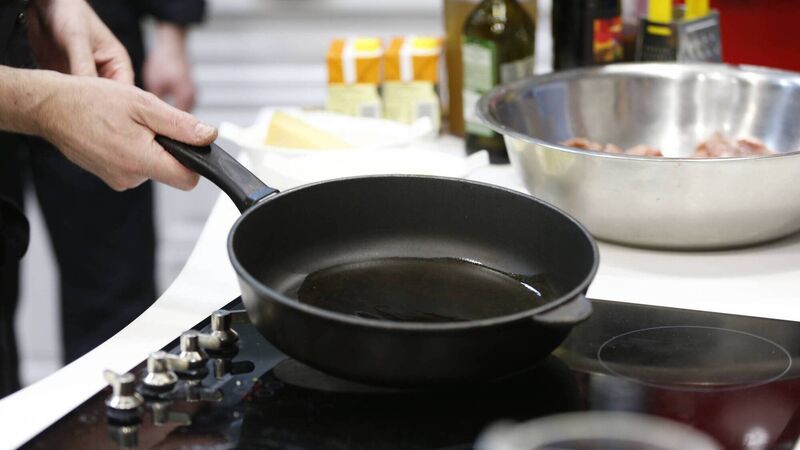Life Hack: Easy ways to make any frying pan non-stick

Non-stick cookware is an absolute dream, but did you know that you can make any piece of cookware non-stick, even that weighty cast iron pan? It’s simple to do and you probably don’t need to buy anything as the tools you need should already be in your kitchen.
For a brand new cast iron pan, first, wash it with warm soapy water, and for an older pan, rub it gently with a soapy sponge to remove any food residue. Starting with as clean a pan as possible will ensure the longest-lasting non-stick result.
Preheat your oven to 180 degrees or gas mark 4 and note this will take a few hours so make sure you won’t need to use the oven during this time. Coat the surface and rim of the dry pan with a thin layer of coconut oil or olive oil and place the pan in the oven for 45 minutes. Re-oil your pan and put it back in the oven for 30 minutes, before repeating the process again. After that second 30 minutes, you should see the pan visibly shining, a sure sign that it is now non-stick.
For other non-stick pans, coat the pan in coconut or olive oil and put it on the hob at a high heat for two minutes. Let it cool and if you can see a reflection in the pan, it is non-stick. If not, repeat the process.
Salt can also be used to season the pan and make it non-stick. Add 128g of table salt to the pan, spreading it to cover the whole surface of the pan. Put the pan on heat to brown it. Carefully remove the salt (it will be very hot) and the surface should be smooth, reflective and non-stick.
As a third method, combine salt and oil to make a non-stick pan. Add a high-melting oil like sunflower oil to the pan with two tablespoons of salt. Heat both until they reach a smoking point. Remove the excess oil and wipe the pan’s surface with a paper towel. Like the earlier methods, you’ll know it’s now non-stick if it is shiny and reflective.
You will need to repeat this process every time if you wash your pan in the dishwasher. You can make the seasoning process last longer by simply wiping clean after each use rather than washing it with water. The best way to keep pans non-stick is to avoid scratching them while cleaning or storing them. If you need to scrape the pan, make sure you use a sorter utensil made of plastic or silicone rather than metal and if you stack your pans, place a paper towel between each pot so they are less likely to scratch each other when being moved.





